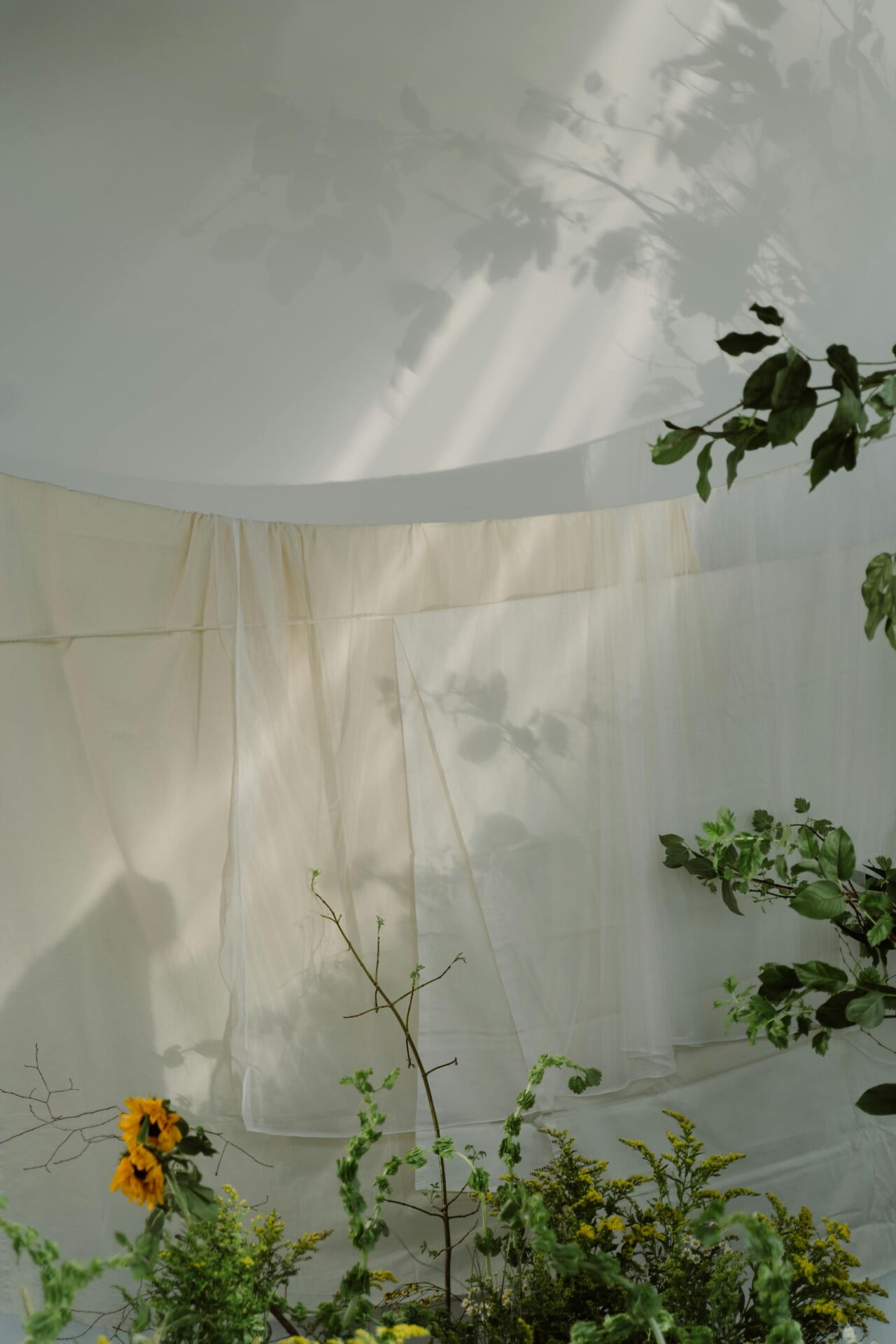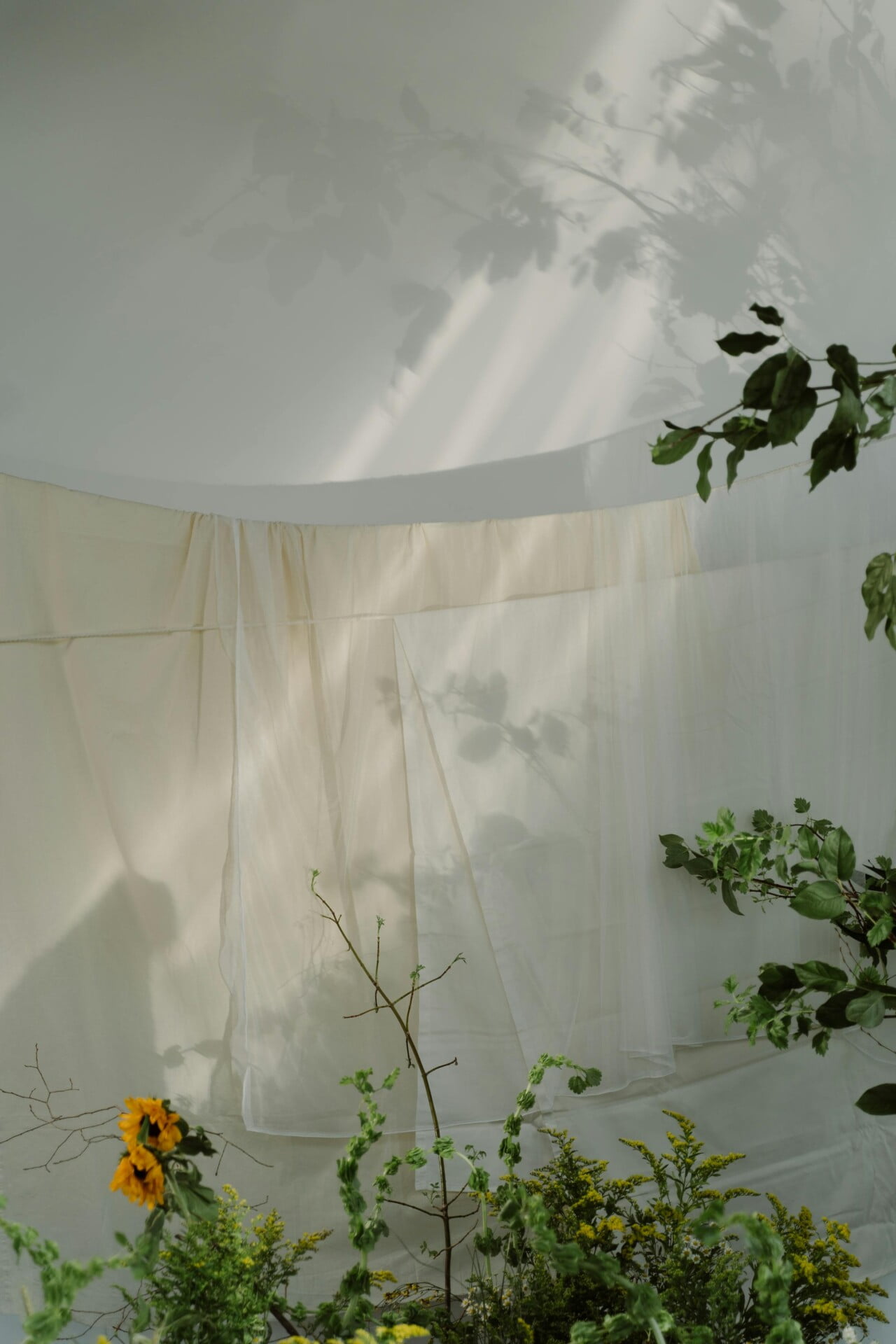Transforming your rooftop garden into a lush and vibrant oasis has never been easier with the top ways to incorporate vertical gardening. Elevate your gardening game and make the most out of your limited space by utilizing vertical structures, such as trellises, hanging baskets, and living walls. Not only will this add aesthetic appeal to your rooftop, but it will also maximize your growing potential, allowing you to cultivate a variety of herbs, flowers, and even vegetables in a small area. Get ready to unleash your inner green thumb and create a stunning vertical garden that will have your neighbors green with envy.
1. Use vertical planters
Vertical planters are a fantastic way to maximize the space in your rooftop garden while adding a touch of greenery. There are several types of vertical planters that you can consider:
1.1. Hanging planters
Hanging planters are a popular choice for vertical gardening. They can be suspended from ceiling hooks or mounted on a sturdy structure, allowing you to create a stunning display of plants at eye level. Hanging planters come in various sizes and materials, from stylish ceramic pots to rustic macrame holders. They are perfect for trailing plants like pothos and ivy, or for showcasing blooming flowers.
1.2. Wall-mounted planters
Wall-mounted planters are an excellent option if you have limited floor space in your rooftop garden. They can be attached directly to the wall using anchors or brackets. These planters come in a variety of designs, from sleek and modern to vintage and rustic. You can mix and match different sizes and shapes to create an eye-catching vertical garden on your rooftop wall.
1.3. Stacked planters
Stacked planters are a creative and space-saving solution for vertical gardening. These planters feature multiple tiers or levels, allowing you to grow a variety of plants in one compact structure. Stacked planters can be made of plastic, metal, or even repurposed materials like old wooden crates. They are perfect for growing herbs, vegetables, or cascading flowers.
2. Create a living wall
If you want to make a bold statement with your rooftop garden, consider creating a living wall. A living wall, also known as a green wall or vertical garden, is a vertical structure covered with plants. Here are a few ways to build a living wall in your rooftop garden:
2.1. Build a trellis system
A trellis system is an excellent choice for creating a living wall in your rooftop garden. You can construct the trellis using materials like wood or metal, and then attach it securely to a wall or freestanding structure. Once the trellis is in place, you can train climbing plants like roses or clematis to grow on the structure, creating a stunning and vibrant living wall.
2.2. Use modular wall panels
Modular wall panels are a convenient option for building a living wall in your rooftop garden. These panels are designed to interlock, allowing you to create a customizable and easy-to-maintain green wall. The panels can be made of materials like plastic or metal and are often equipped with built-in irrigation systems to ensure the plants receive enough water. You can choose from a variety of plant species to create a lush and visually appealing living wall.
2.3. Install a grid system
A grid system is another way to create a living wall in your rooftop garden. This approach involves installing a grid made of durable materials like wire or plastic, and then planting individual plants or pre-grown plant modules into the grid. The plants can be arranged in patterns or designs to create a visually striking living wall. A grid system allows for easy maintenance and flexibility in plant selection.

3. Hang pots and baskets
Hanging pots and baskets are a classic choice for vertical gardening. They add a charming touch to your rooftop garden while utilizing the vertical space effectively. Here are a few ideas for incorporating hanging pots and baskets in your rooftop garden:
3.1. Utilize hooks and brackets
Hooks and brackets are essential for hanging pots and baskets in your rooftop garden. You can attach them to various surfaces, such as walls, railings, or fences. Choose sturdy hooks and brackets that can hold the weight of the pots or baskets and ensure they are securely fastened. Once you have the hooks or brackets in place, you can hang your favorite flowering plants, herbs, or trailing vines in the pots or baskets.
3.2. Hang pots from railings or fences
If your rooftop garden has railings or fences, take advantage of these structures to hang pots. You can use lightweight pots with hooks or attach hooks to existing pots. Hanging pots from railings or fences allows you to make the most of the vertical space in your garden while adding a vibrant burst of color.
3.3. Use hanging baskets and macrame holders
Hanging baskets and macrame holders are a stylish and versatile option for vertical gardening. These decorative holders can be hung from hooks or brackets and come in various sizes and designs. You can fill them with flowering plants, herbs, or cascading vines to create an enchanting display in your rooftop garden. The macrame holders add a bohemian touch to your garden decor, while the hanging baskets provide a traditional and timeless look.
4. Install vertical shelves
Vertical shelves are an excellent addition to your rooftop garden, providing both functionality and visual appeal. Here are a few types of vertical shelves that you can incorporate:
4.1. Floating shelves
Floating shelves are a trendy and space-saving option for displaying potted plants and decorative items in your rooftop garden. These shelves are mounted directly onto the wall and create the illusion of plants floating in mid-air. Floating shelves can be made of wood, metal, or glass, depending on your aesthetic preferences. They add a modern touch to your garden decor while keeping your plants well-organized and easily accessible.
4.2. Ladder-style shelving units
Ladder-style shelving units are a charming and practical choice for vertical gardening. These freestanding structures resemble ladders, with multiple shelves that gradually decrease in size as they go up. Ladder-style shelves can be made of wood or metal and can be easily folded for storage. They are perfect for displaying a variety of plants, from compact herbs to larger potted flowers.
4.3. Cubical or modular shelves
Cubical or modular shelves offer versatility and customization options for your rooftop garden. These shelves are made up of individual cube-shaped units that can be arranged in various configurations to fit your space and plant collection. Cubical or modular shelves can be made of wood, plastic, or metal, and they provide ample space for both small and medium-sized plants. You can mix and match different cube sizes and arrange them in unique patterns to create a visually appealing vertical display.

5. Opt for vertical structures
Incorporating vertical structures into your rooftop garden not only adds height and visual interest but also provides support for climbing plants. Here are a few types of vertical structures that you can consider:
5.1. Vertical garden frames
Vertical garden frames are specifically designed to support climbing plants and create a vertical focal point in your rooftop garden. These frames can be made of metal, wood, or even recycled materials like pallets. You can attach the frames securely to a wall or freestanding structure and train climbing plants to grow on them. Vertical garden frames are perfect for creating a lush and green backdrop in your rooftop garden.
5.2. Pergolas or arbors
Pergolas or arbors are architectural structures that can add a stunning visual element to your rooftop garden. These structures typically consist of vertical posts and horizontal beams, creating an open-air space that provides shade and support for climbing plants. Pergolas or arbors can be made of wood, metal, or vinyl, and they can be customized to suit your garden’s style and size. You can grow climbing roses, vines, or jasmine on the pergola or arbor, creating a dreamy and fragrant oasis in your rooftop garden.
5.3. Obelisks or trellises
Obelisks or trellises are vertical structures that are often used in traditional garden settings. They are typically made of metal or wood and have an elegant and decorative design. Obelisks or trellises can be freestanding or attached to a wall, and they provide support for climbing plants like morning glories or sweet peas. These vertical structures add visual interest and height to your rooftop garden, creating a focal point for your plantings.
6. Invest in vertical towers
Vertical towers are a unique and space-efficient way to grow a wide variety of plants in your rooftop garden. These towers can be freestanding or attached to a wall, and they offer a convenient and compact solution for vertical gardening. Here are a few types of vertical towers that you can consider:
6.1. Vertical gardening towers
Vertical gardening towers are specifically designed to maximize growing space by stacking multiple planting pockets on top of each other. These towers can be made of plastic, metal, or fabric and are often equipped with an irrigation system to ensure proper watering. Vertical gardening towers are ideal for growing herbs, greens, or compact vegetables in a small rooftop garden. They are easy to maintain and provide a visually striking vertical display.
6.2. Hydroponic or aeroponic towers
Hydroponic or aeroponic towers are innovative options for vertical gardening that utilize water-based growing methods. These towers allow you to grow plants without soil, using nutrient-rich water to nourish the roots. Hydroponic or aeroponic towers are often compact and self-contained, making them suitable for small rooftop gardens. You can grow a wide range of plants in these towers, from lettuce and herbs to strawberries and peppers.
6.3. PVC pipe or gutter towers
PVC pipe or gutter towers are creative and budget-friendly options for vertical gardening. These towers are made by repurposing PVC pipes or gutters, which are stacked vertically and filled with soil or growing media. PVC pipe or gutter towers can be anchored securely to a wall or freestanding structure. They provide an excellent growing space for a variety of plants, and their vertical design allows for efficient use of space in your rooftop garden.

7. Use hanging vine plants
Hanging vine plants are a beautiful and low-maintenance option for adding greenery to your rooftop garden. These plants have trailing vines that gracefully hang down, creating a mesmerizing effect. Here are a few popular types of hanging vine plants to consider:
7.1. Ivy or creeping fig
Ivy and creeping fig are classic choices for hanging vine plants. These plants have lush, cascading foliage that adds an elegant touch to your rooftop garden. Ivy and creeping fig are both hardy and adaptable, making them suitable for various growing conditions. They can be grown in hanging baskets, macrame holders, or trained to climb on trellises or walls.
7.2. Spider plants or pothos
Spider plants and pothos are popular houseplants known for their trailing vines and air-purifying qualities. These plants are easy to care for and thrive in a wide range of environments. Spider plants and pothos can be grown in hanging baskets, allowing their vines to dangle gracefully in your rooftop garden. Their variegated leaves add a splash of vibrant green to your vertical plant display.
7.3. Hoya or philodendron
Hoya and philodendron are breathtaking plants with cascading vines that feature unique and eye-catching foliage. Hoya plants have waxy leaves and produce lovely clusters of fragrant flowers. Philodendron plants have heart-shaped leaves that come in various shades of green. Both Hoya and philodendron can be grown in hanging baskets or macrame holders, allowing their vines to cascade down and create a stunning visual display in your rooftop garden.
8. Incorporate vertical herbs and veggies
If you enjoy cooking or want to grow your own fresh produce, incorporating vertical herbs and veggies in your rooftop garden is a fantastic idea. Here are a few ways to do that:
8.1. Plant herbs in wall-mounted pots
Growing herbs in wall-mounted pots is a convenient and space-saving option for your rooftop garden. You can install a vertical wall-mounted planter system and plant different herbs in individual pots. This setup allows you to easily access your herbs while keeping them organized and within reach. Choose a variety of herbs like basil, mint, rosemary, and thyme to add flavor to your culinary creations.
8.2. Grow tomatoes in hanging baskets
Tomatoes are a popular choice for vertical gardening, and hanging baskets are the perfect way to grow them in your rooftop garden. Select compact or trailing tomato varieties and plant them in hanging baskets filled with nutrient-rich soil. Hang the baskets securely and provide adequate support for the growing vines. With proper care and maintenance, you can enjoy a bountiful harvest of fresh tomatoes from your hanging baskets.
8.3. Utilize vertical hydroponics systems
Vertical hydroponics systems are an efficient and space-saving way to grow a wide range of vegetables in your rooftop garden. These systems use water-based nutrient solutions to nourish the plants’ roots, eliminating the need for soil. Vertical hydroponics systems often consist of stacked stacked trays or shelves, allowing you to grow multiple plants in a compact space. Some popular vegetables that thrive in hydroponic systems include lettuce, spinach, peppers, and cucumbers.
9. Create a vertical flower garden
Adding a vertical flower garden to your rooftop garden can create a stunning and colorful display. Here are a few ways to achieve this:
9.1. Hang flowering plants on trellises
Trellises are an excellent support structure for flowering plants in your vertical flower garden. You can attach a trellis securely to a wall or freestanding structure and plant climbing or vine plants. Select flowering plants like roses, clematis, or morning glories with vibrant blooms and train them to grow on the trellis. As the plants grow and bloom, their flowers will add a striking visual element to your rooftop garden.
9.2. Plant cascading flowers in vertical planters
Vertical planters are a great way to showcase cascading or trailing flowers in your rooftop garden. Choose plants like petunias, lobelia, or trailing geraniums that have a natural cascading habit. Fill the vertical planters with well-draining soil and insert the flowering plants, allowing their vines to hang down. The vibrant colors and graceful blooms of these flowers will create a striking vertical flower garden.
9.3. Use a flower wall panel system
A flower wall panel system is a hassle-free way to create a vertical flower garden in your rooftop garden. These panels are typically made of lightweight materials like foam or plastic, with planting pockets designed to hold individual plants. Flower wall panel systems often come with built-in irrigation systems to provide the plants with water. You can choose from a variety of flowering plants and arrange them in the panels to create a stunning and easy-to-maintain vertical flower garden.
10. Combine vertical gardening with other elements
To make your rooftop garden truly exceptional, consider combining vertical gardening with other elements that enhance the overall experience. Here are a few ideas:
10.1. Integrate a water feature
Incorporating a water feature like a small fountain or pond in your rooftop garden adds a soothing and relaxing ambiance. You can place the water feature strategically near your vertical plantings to create a beautiful focal point. The sound of running water combined with the lush greenery will create a tranquil oasis where you can unwind and enjoy the serenity of nature.
10.2. Include seating or a relaxation area
Make your rooftop garden a welcoming space by including seating or a relaxation area. You can add benches, lounge chairs, or even a cozy hammock for lounging and enjoying your vertical garden. Choose comfortable and weather-resistant furniture that complements the style of your garden. Having a designated seating or relaxation area allows you to fully immerse yourself in the beauty of your rooftop garden.
10.3. Incorporate lighting or a vertical garden sculpture
Lighting is a vital element in any garden, and rooftop gardens are no exception. Install outdoor lighting strategically to highlight your vertical garden elements and create a warm and inviting atmosphere in the evenings. Consider using solar-powered lights or low-voltage LED lights for energy efficiency. Additionally, you can enhance the aesthetic appeal of your vertical garden by including a vertical garden sculpture. Choose an art piece that complements your garden’s theme and style, adding a unique and artistic touch to your rooftop garden.
In conclusion, incorporating vertical gardening in your rooftop garden is a fantastic way to maximize space, add beauty, and create a lush oasis. Whether you choose hanging planters, living walls, hanging pots and baskets, vertical shelves, vertical structures, vertical towers, hanging vine plants, vertical herbs and veggies, vertical flower gardens, or a combination of these techniques, you can transform your rooftop into a breathtaking green space. By following these creative ideas and utilizing vertical gardening techniques, you can create an oasis in the sky and enjoy the beauty and benefits of a thriving rooftop garden. Happy gardening!

